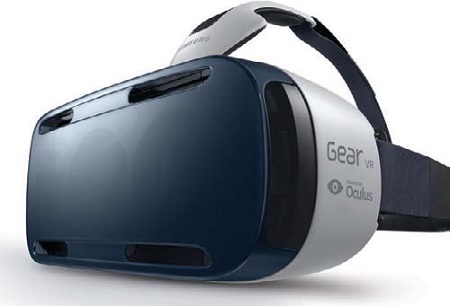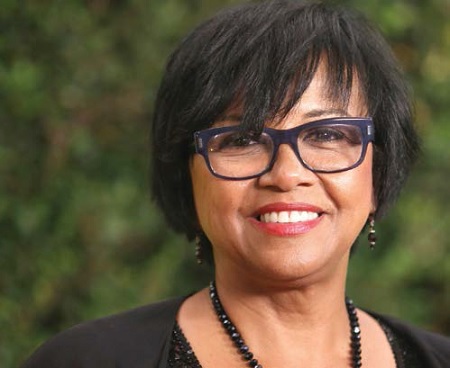Setting Technical Standards for Storytelling
HOLLYWOOD, CALIF.—Storytelling and a whisper of magic. Are these actually the labels being used to describe that standards-driven, technology-laden annual convention known as SMPTE?

Mix in the right players in the midst of Tinsletown itself, and what appears is an annual event with same solid name—the SMPTE Annual Technical Conference & Exhibition—but with a focus on collaboration, narratives and entertainment that doesn’t instantaneously resemble your father’s SMPTE convention.
“At the end of the day, this is about entertainment,” said Aimée Ricca, marketing and communications manager for SMPTE in describing the focus of this year’s annual event, which will be held at the Loews Hollywood Hotel from Oct. 26-29. “That’s what SMPTE sets standards for. We promote interoperability so people can consume entertainment.”
That means talking about technology in the context of storytelling. To achieve that this year, SMPTE is collaborating with new partners and highlighting technologies that allow storytellers to better embrace future technologies.
And thus, tell more compelling stories.
GETTING REAL ABOUT VIRTUAL

SMPTE will devote the first day of its convention to augmented and virtual reality.
SMPTE will devote the first day of its convention—known as the 2015 SMPTE Symposium—to a topic people don’t necessarily associate with the organization according to Ricca. “People don’t think about virtual reality when they think about SMPTE, but there’s a conversation that’s going on between entertainment, the Internet and the virtual worlds.”
Driving that conversation will be Aaron Thibault, vice president of Gearbox Software, a Plano, Texas-based video game development company, and a faculty member at Baylor University, who will serve as chair for the symposium.
Bringing VR, immersive reality and gaming into the SMPTE conference seemed the right move, Ricca said, as the one-day symposium is typically dedicated to an on-trend technology.
“[The symposium] looks at the various issues surrounding augmented reality and virtual reality—the production issues, the technical issues, and color and frame rate,” said Jim DeFilippis, co-chair of the 2015 convention along with Paul Chapman, who is also section governor for the SMPTE Hollywood chapter.
“When major studios like Fox, Paramount and Universal are at least exploring VR, it gets everyone’s attention, and appropriately so,” DeFilippis said. “The purpose of the symposium is really to outline the challenges, the potential solutions and the workflow issues.”
The goal of the program is to find common ground, the organizers said, pointing to the opening session “Augmented Reality Technology Landscape” that will highlight how the engineering and gaming world are coming together, and how standards will play a part its long-term adoption.
The sessions on virtual and augmented reality are appealing to nearly everyone, Ricca said. “It’s very much geared toward the technologists, the engineers and the early adopters who are using this technology to open a dialogue.” The symposium will also feature a demo room that will showcase VR and augmented reality technology, as well as showcase student demonstrations.
THE THREE PILLARS OF SMPTE
SMPTE is also making headlines for its new collaborations.

On Monday, Oct. 26, SMPTE and HPA will sponsor the “Women in Technology Luncheon,” which will feature Cheryl Boone Isaacs, president of the Academy of Motion Picture Arts and Sciences.
Last year, SMPTE announced it was consolidating with the Hollywood Post Alliance (HPA), the post-production trade association and this year the convention will show substantive results of that merger. The move will help both organizations extend their influence and reach new engineering, technical and creative content professionals, and in doing so, embrace one of SMPTE’s core missions: improving and streamlining the standards development processes.
At the 2015 convention, HPA and SMPTE will sponsor the “Women in Technology Luncheon,” which will feature Cheryl Boone Isaacs, president of the Academy of Motion Picture Arts and Sciences, in an effort to highlight the strides the industry is attempting to make to increase diversity in TV and film. The two organizations will also host a new SMPTE-HPA Student Film Festival, which will be held on Tuesday, Oct. 27, following the Opening Night Reception. Students are an integral part of SMPTE each year, Ricca said, and the festival will honor student work that makes the best creative use of VR reality and the best creative use of technology to engage an audience in a story.
“It’s exciting because SMPTE has three pillars—membership, education and standards—and [it ’s important we continue to] embrace the next generation of filmmakers, engineers and creative post professionals,” she said in explaining SMPTE’s dedication to supporting student work.
FOCUS ON CORE TECHNOLOGIES
While SMPTE is charting some new ground, it will also devote papers, panels and sessions to those core technologies that are currently dominating the professional video industry—think HDR, 4K and IP.
“There’s a huge amount of interest in what we’re referring to as ‘bigger pixels’— high dynamic range, Ultra HD and higher frame rates,” Chapman said. “There’s a lot of interest in making the consumer experience better.”
The technical conference is a litany of engineering touchstones: color management, IT media infrastructure, UHD TV capture, image quality in HDR, digital cinema and advances in display. As it has in year’s past, the 2015 SMPTE convention will attempt to look at all the major pieces of the moving image ecosystem. And as technologists will appreciate, there will be a fair number of sessions and papers that dive down deep.
“There also a tremendous amount of interest in moving video moving around facilities from coax to IP,” Chapman said, adding that the conversations have moved from theoretical standards to what’s happening in the real world.
The conference will also feature a two-part series on cloud platforms, a panel on the ATSC 3.0 standard, and a panel on OTT and streaming technologies.
SMPTE releases nearly 50 different standards a year, Ricca said, and that work remains SMPTE’s bread and butter. Next up: the planned release of a SMPTE Study Group Report on HDR this month. Sessions at the show will discuss standards that have been recently published, and give guidance on how users can properly adopt them into their workflow.
Despite the changes—or maybe because of them—SMPTE is at its heart bridging communities. “We have engineering communities, practicing people from the industry, we have people that are more on the creative side, and academics,” DeFilippis said. “SMPTE is a confluence of these different communities.”
For more information on the conference, visit www.smpte2015.org.
Get the TV Tech Newsletter
The professional video industry's #1 source for news, trends and product and tech information. Sign up below.
Susan Ashworth is the former editor of TV Technology. In addition to her work covering the broadcast television industry, she has served as editor of two housing finance magazines and written about topics as varied as education, radio, chess, music and sports. Outside of her life as a writer, she recently served as president of a local nonprofit organization supporting girls in baseball.

